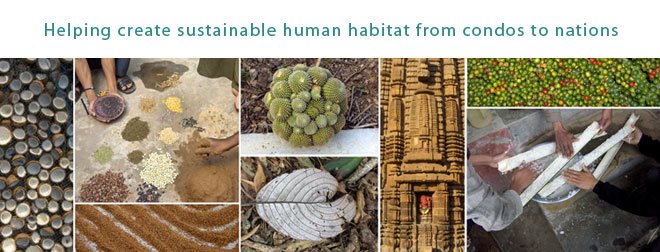 With an understanding of permaculture and an ability to use the tools it offers a farmer will be able to create and/or modify their farm to increase functionality and yields while decreasing the external inputs (time and resources) necessary to achieve these. It should be noted that these increases will likely take more than a year or two to realize. While it is important, and Permaculture teaches how, to get immediate benefits (yields) from its application, it will take a few years (depending on conditions and the farmers skill) to achieve the optimal results mentioned above. Permaculture is a relatively new approach (about 30 years old) and has a limited history from which to jumpstart a project. However, as more people apply Permaculture in a variety of conditions and cultures, document the process from the start, and share their understandings this ‘lag time’ will decrease.
With an understanding of permaculture and an ability to use the tools it offers a farmer will be able to create and/or modify their farm to increase functionality and yields while decreasing the external inputs (time and resources) necessary to achieve these. It should be noted that these increases will likely take more than a year or two to realize. While it is important, and Permaculture teaches how, to get immediate benefits (yields) from its application, it will take a few years (depending on conditions and the farmers skill) to achieve the optimal results mentioned above. Permaculture is a relatively new approach (about 30 years old) and has a limited history from which to jumpstart a project. However, as more people apply Permaculture in a variety of conditions and cultures, document the process from the start, and share their understandings this ‘lag time’ will decrease.Some of the immediate benefits the farmer will receive from training and applying Permaculture are as follows: First will be a deeper insight and understanding of how resources of all types flow onto, through, and out of their farm. With this knowledge they can make decisions that will help to minimize inputs and optimize the benefits form these flows. They will be able to assess how and where resources are being ‘lost’ and how and where to interact with resources to maintain them longer on the farm. Simultaneously there will be a diversification of yields. This will have several affects, yields will move towards a year round occurrence, there will be an overall decrease in the percentage of crop loss due to pests and disease, and there will be an increase in sustainability which will reflect a move towards true resiliency. The farmer with this deeper understanding of how their farm is functioning, and with the specific tools and approaches Permaculture teaches, will be able to develop a long term design that includes strategies of implementation. At the beginning of the implementation process there can be an increase in necessary inputs and resources from time and money to labor, materials, and experimentation. However, as the farmer builds on their successes, as beneficial and regenerative relationships are established between all aspects of the farm, as diversity and complexity become a foundation for the farm, the necessity for external inputs decreases and resources become internalized with less energy needed to maintain the farm. This is not to say that farming will become a lazy nap in the afternoon sun, but, when Permaculture is successfully applied much less resources and work is required to achieve the same and often greater yields. A Permaculture technique that exemplifies this is called a Guild. A Guild is a harmonious assemblage of species around a central element (often a tree). It is over simplistically like companion planting, but contains greater levels of complexity and yields. This is achieved by utilizing a multitude of spacial areas within a very confined area; tall canopy, mid canopy, bushes, smaller shrubs, herbaceous layers, climbers, and subsurface tubers and taproots. All species within this assemblage contribute to the community; from nutrient fixing, to insect repelling and attracting. Once established a well designed guild will give year around yields of various types; food, fodder, medicine, fuel or whatever specifics the farmer designs into it. This technique exemplifies Permacultures emphasis towards perennial plantings that require less continuous and reoccurring inputs (though it still has much to offer towards the annual cropping patterns inherent in much of farming).
To summarize, Permacultures offerings can be seen as multilevel. First, it teaches the farmer how to come to a deeper understanding the flows internal and external that move through their farm. Second, it assembles a wide range of techniques and strategies (from cropping methods, to waste management, to energy alternatives) that a farmer can utilize as is appropriate to their specific site and culture. Thirdly, Permaculture gives the farmer the skills and understandings to assemble these flows, techniques and strategies into a design (including the process and schedule for implementation) that is site specific, maximizes a wider variety of yields, and creates a diversity and complexity that is the hallmark of a resilient system. Included in this outcome is the decrease in the external inputs so that even if there is a drop in yields due to environmental or market factors the overall outcome is still well within the parameters of sustainability.


No comments:
Post a Comment